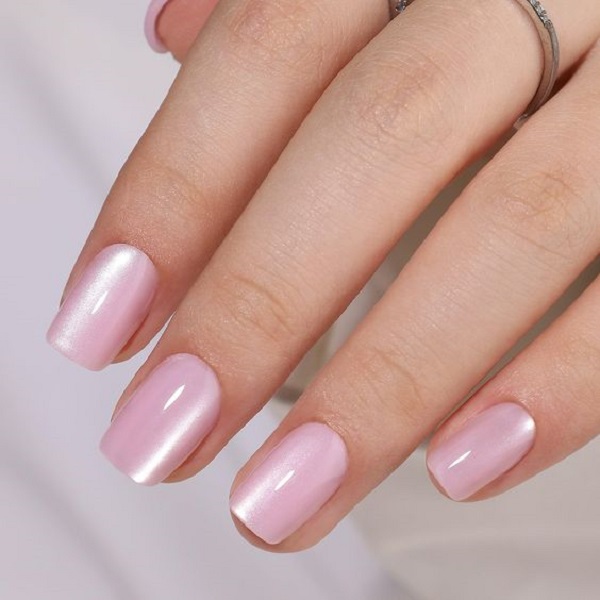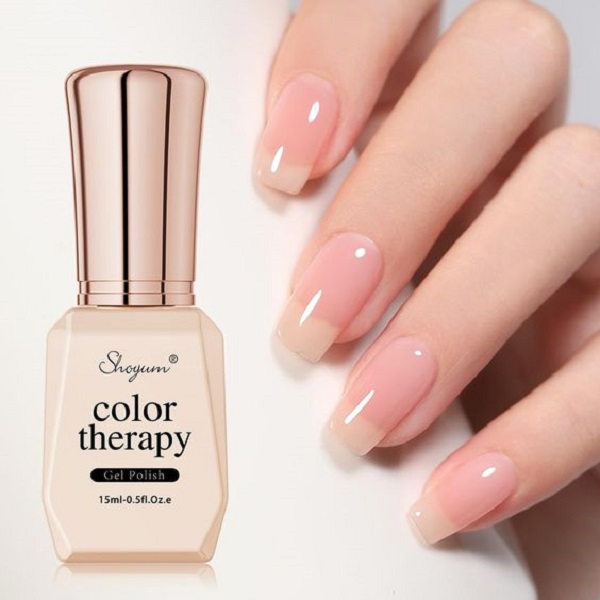Introduction to Gel Nail Polish Curing
Gel nail polish curing is a crucial step in achieving a durable, glossy manicure. Unlike regular nail polish, gel requires a specific process to set and harden properly. This involves the use of UV or LED lamps to trigger a process called polymerization. This critical step transforms the liquid gel polish into a hard, chip-resistant coating. How to cure gel nail polish?
Effective curing demands attention to detail and the right equipment. Whether using a UV lamp or an LED lamp, the lamp’s strength and the exposure time play key roles. Personal safety is also important, so understanding the basics can help prevent skin damage from UV exposure.
Learning how to cure gel nail polish properly not only ensures your manicure looks great but also lasts longer. This introduction will guide you through the essentials of curing gel polish, helping you perfect your technique for salon-quality results at home.
Essentials for Curing Gel Nail Polish
To cure gel nail polish correctly, you need the right tools and technique. Starting with a quality gel polish is important. Poor-quality gel may not cure properly, leading to issues later. Choose a gel polish that is compatible with your lamp type, whether UV or LED.
Always use a base coat before applying gel color. This helps the color stick and last longer. Evenly apply the polish in thin layers. Thick layers may not cure well and can lead to wrinkles or bubbles.
The curing lamp should be in good condition. A lamp with weak bulbs may not cure the gel fully. Check the lamp’s wattage; it should match the requirements of your gel polish.
Cure each layer of nail polish as instructed. Do not rush the process. Each coat, including base and top coats, need their own curing time. Follow the times given by the polish maker. Not all polishes cure in the same amount of time.
Keep your hands still while curing the polish. Moving around could lead to uneven curing. Ensure all parts of the nail are exposed to the light.
After curing, some polishes leave a sticky layer. Clean this off with a gel cleanser or alcohol wipe. This is not a sign of incomplete curing, but part of the process.
Wear protective gloves or apply sunscreen on your hands to shield your skin from UV rays. Regularly clean your UV/LED lamp to keep it working well.
By following these steps, curing gel nail polish should be a breeze. This will give you a strong, long-lasting manicure.
Curing Gel Polish with LED Lamps: Step-by-Step Guide
How to cure gel nail polish? Curing gel polish under an LED lamp is both time-saving and efficient. To get the best results, it’s important to follow this step-by-step guide carefully. Here’s how to cure your gel nail polish using an LED lamp:
- Prepare your nails. Clean and shape your nails. Push back the cuticles and buff the nails lightly. Use an alcohol wipe to cleanse the surface.
- Apply a base coat. Put on a thin base coat. Ensure you don’t touch the cuticles or skin.
- Cure the base coat. Place your nails under the LED lamp. Set it to cure for 45 seconds.
- Put on gel polish. Apply a very thin layer of color. Stay close to the edges but avoid the skin.
- Cure the first coat. Set your hand under the lamp for 30-45 seconds.
- Add a second coat. If needed, apply a second thin layer for more color depth.
- Cure again. Place your nails under the lamp. Another 30-45 seconds should do it.
- Top it off. Apply a thin layer of top coat to seal the color and add shine.
- Final cure. Cure the top coat under the LED lamp for another 45 seconds.
- Clean up. If there’s a tacky layer, wipe it off with a gel cleanser.
- Moisturize. Finish by applying cuticle oil to hydrate the skin around your nails.
Remember, each layer must be thin and even. Thick layers might not cure correctly. Curing times can vary, so always check the instructions for your specific gel polish and LED lamp. Furthermore, protecting your hands from exposure to LED light is wise. You could wear protective gloves with fingertips cut off. Lastly, maintaining your LED lamp, such as regular cleaning of the bulbs, will assure better results.

Curing Gel Polish with UV Lamps: Step-by-Step Guide
Curing gel polish with a UV lamp is straightforward if you follow these steps closely. Let’s go through the process:
- Prep your nails: Clean your nails well. Shape them and push back the cuticles. A light buffing is key for adhesion. Clean the surface with alcohol.
- Apply base coat: Use a thin layer of base coat. Keep it away from your cuticles and skin.
- Cure base coat: Place hands under the UV lamp. Set the timer for two minutes.
- Apply gel polish: Coat your nails with a thin layer of gel polish. Avoid the skin and cap the edges.
- Cure the first coat: Put your hand under the lamp again. Set it for two minutes this time.
- Add more color: If needed, apply another thin layer for deeper color. Repeat the curing process.
- Apply top coat: Add a thin top coat. This seals the color and makes it shine.
- Cure top coat: Use the UV lamp again. A two-minute cure will be enough.
- Wipe tacky layer: If tacky, wipe off with a gel cleanser or alcohol.
- Hydrate cuticles: Finish with cuticle oil to nourish the skin around nails.
Remember, thin coats are vital for a good cure. Always follow your gel polish and lamp’s specific instructions. Protecting your hands is important. Consider gloves that block UV rays. Keep your UV lamp clean for the best performance.
How to Avoid Over-Curing Gel Polish
Avoiding over-curing of gel nail polish is essential for maintaining its integrity and avoiding damage to your nails. Here are some steps to prevent over-curing:
- Read Instructions Carefully: Always check the curing times suggested by the gel polish manufacturer.
- Use Appropriate Lamps: Ensure your UV or LED lamp matches the gel polish requirements.
- Timer is Key: Use the lamp’s built-in timer or a separate one to track curing time accurately.
- Apply Thin Layers: Thick layers increase the risk of over-curing. Thin layers cure evenly and quickly.
- Test Cure: Test the cure by gently tapping the nail surface; it should not feel tacky.
- No Repeated Curing: Do not recure a layer ‘just to be sure’; stick to the recommended time.
- Watch for Signs of Over-Curing: Brittleness and discoloration means too much exposure.
By following these guidelines, you can ensure that your gel polish is cured for the optimal time to achieve a professional-looking manicure without the risk of over-curing.

Troubleshooting Common Issues in Gel Polish Curing
When curing gel nail polish, you may encounter some problems. Common issues include wrinkles in the polish, a tacky residue, or nails not curing properly. Here are ways to troubleshoot these problems:
- Wrinkles in Polish: This can happen if the polish is applied too thickly. To prevent this, apply thin, even coats and cure each layer fully before adding the next.
- Sticky Residue: Some polishes leave a tacky layer after curing. Simply wipe it off with a gel cleanser. It’s not a fault;
it’s part of the process.
- Nails Not Curing: If your gel polish isn’t drying, the lamp may be faulty, or the polish wasn’t applied correctly. Check the lamp’s bulbs and wattage. Apply the polish in thinner layers and make sure to cure each layer for the recommended time.
- Dull Finish: If your manicure isn’t shiny, the top coat may not have cured well. Cure the top coat properly, and make sure it’s not expired.
- Peeling Polish: If the polish peels, it could be due to oils on the nails before application, not capping the free edge, or over-curing. Clean your nails with alcohol before starting, apply the polish over the tip of the nails, and avoid over-curing.
- Under-Curing: Insufficient curing can make the polish soft or cause it to peel. Ensure you’re using the correct curing time as per the polish instructions. If the issue persists, it might be time to replace the lamp bulbs.
Remember that practicing will make perfect. So don’t get discouraged. These tips should help you address common curing issues and help improve your gel polish application.
Final Tips and Tricks for Long-Lasting Gel Manicure
For a manicure that stays flawless, follow these final tips and tricks. Ensure your nails are truly ready before starting the gel polish application. Always work in a clean, dust-free space to prevent dirt from spoiling the polish.
Clean Nails Properly
Start with clean, oil-free nails. A swipe of alcohol can remove natural oils. Avoid lotions or oils pre-manicure.
Use High-Quality Products
Invest in good quality gel polish, base coat, and top coat for best results. They help the manicure last longer.
Apply Thin Layers
Thin layers of gel polish cure better and resist peeling. Thick layers may lift or wrinkle.

Cap the Free Edge
Always wrap the polish over the nail tip. This ‘capping’ prevents early chipping.
Avoid Heat and Moisture
After curing, keep your nails away from hot water or heat for a few hours. Moisture can weaken the bond.
Wear Gloves for Protection
Protect your gel nails when cleaning or gardening. Gloves can save your manicure from scrapes and chips.
Moisturize Regularly
Cuticle oil can keep your nails and skin hydrated. Hydration prevents hangnails and helps maintain your manicure.
Be Patient with Drying Time
Wait the full curing time under the lamp. Rushing can mean an incomplete cure and a shorter-lasting manicure.
Regular Maintenance
Touch up any chips or wear edges as soon as possible. Timely fixes can prolong the life of your gel manicure.
Gentle Removal
When it’s time to remove, do it gently. Rough removal can damage the nail surface.
By following these simple yet effective tips and committing to gentle care, you’ll extend the life of your gel manicure and keep your nails looking great for weeks.
